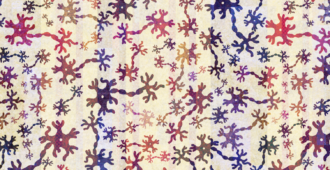Entering the room for the opening session of the International Symposium on ALS, there was a real air or anticipation. Organisers (yes, that included you, Brian!) nervously pacing back and forwards, checking final details and greeting old friends and colleagues. Then Wim Robberecht, chair of the Programme Committee, called us all to order. A ripple of murmuring and camera flashes from the back of the room drew our attention as Glen Doyle on behalf of the Gadigal tribe welcomed us to Sydney by playing the didgeridoo and singing us a welcome song. Dressed and decorated in a traditional manner it was a stunning start to the meeting!
We heed the invitation of the President of MND Australia, Ralph Warren, to learn and participate in the deliberations, by absorbing the excellent talks of the two opening speakers. (Yes, there was a third presentation too, but more of this later).
Prof Ravits gave us an insight into what may be causing the differences that we see in people with MND. As he said himself, he started his talk in the most fitting way – by starting with one of his patients, describing their symptoms over the progression of their illness. Even for people with the form of MND known as ALS (or amyotrophic lateral sclerosis) each person develops the disease in a different way – why?? Prof Ravits has identified a broad two stages of disease – an early stage, where the symptoms are separate and very specific and a later stage where there is generalised damage to motor neurones and a broader range of symptoms. On a cellular level, these symptoms are reflected in ‘trigger’, ‘propagation’ and ‘neurone death’ stages of disease. Learning more about the early stage of the disease may give us opportunities to target specific treatments to the area of motor neurone damage, he concluded.
The theme of a trigger for motor neurone damage dovetailed the presentations of John Ravits and the next speaker, Garth Nicholson together. In a spectacular video involving a chain reaction of ping pong balls being released from a large table of loaded rat traps, Prof Nicholson highlighted that a trigger event is needed in all forms of MND –whether it is the rare, inherited form of MND or the more common sporadic disease. In the video, this trigger was a colleague throwing a single ping pong ball on to the table, triggering all of the other balls to be released and fly everywhere (with the initiator cowering in the back of the room to protect himself from the flying balls!). He is optimistic for the future of MND research in finding these, as yet unknown triggers of disease.
Read our official day 1 press release on our website.






Comments are closed.